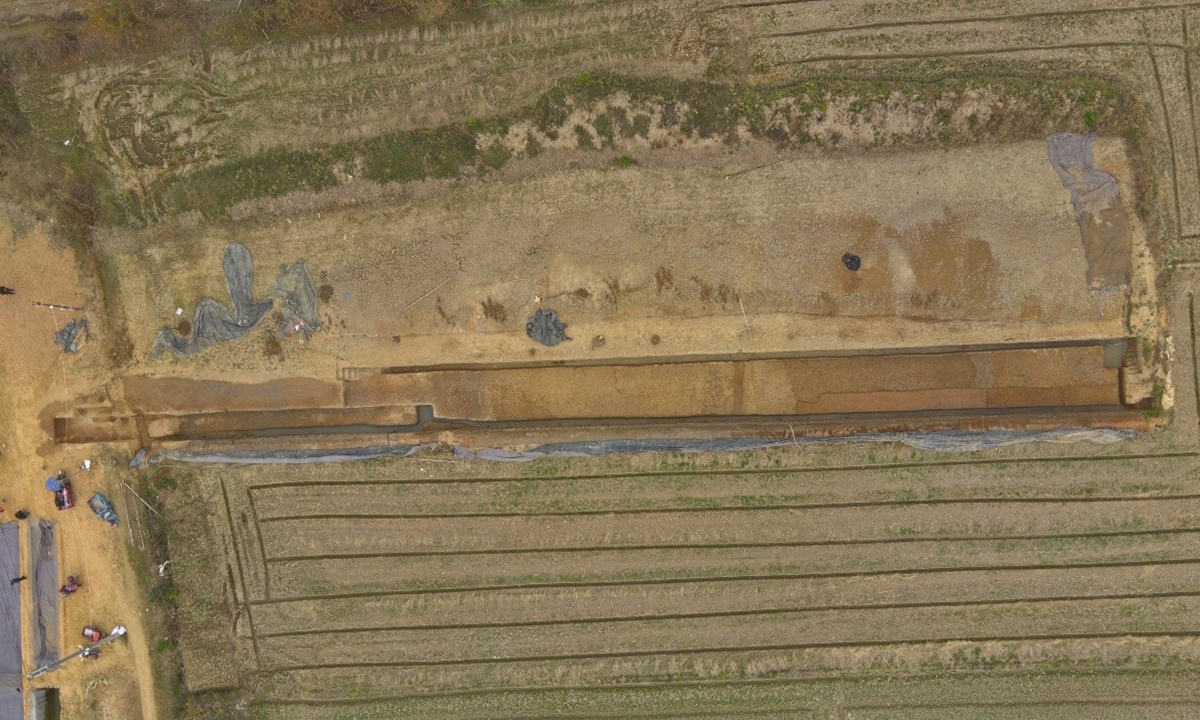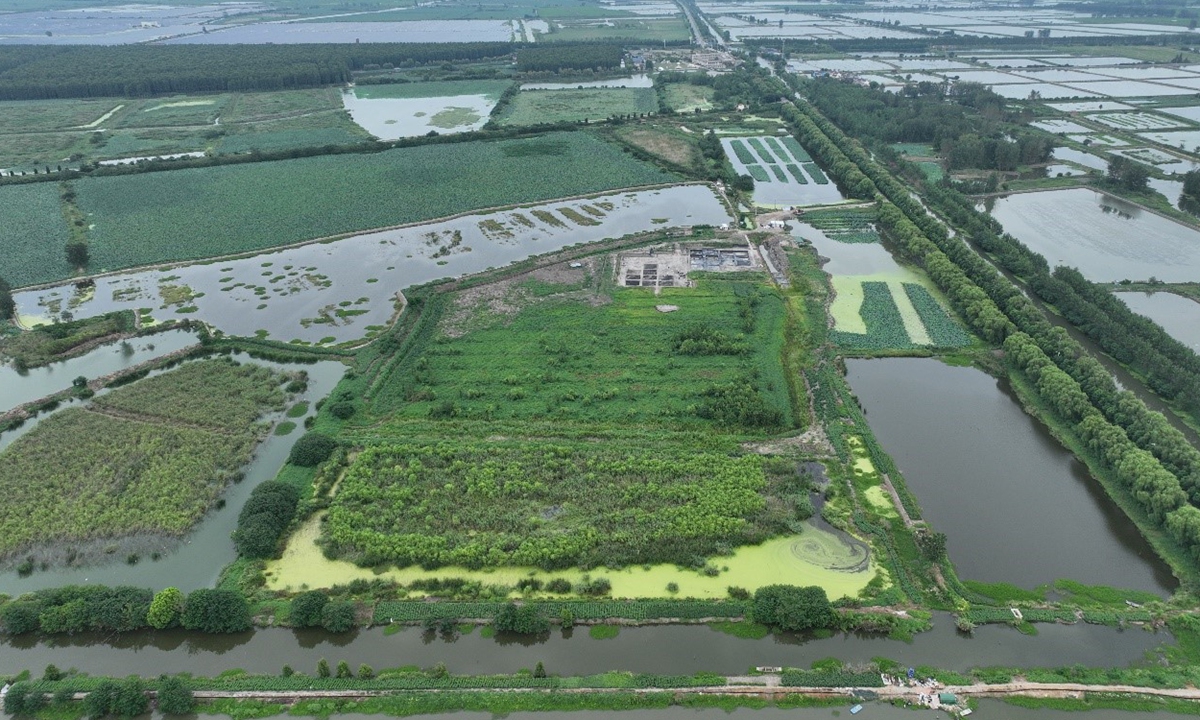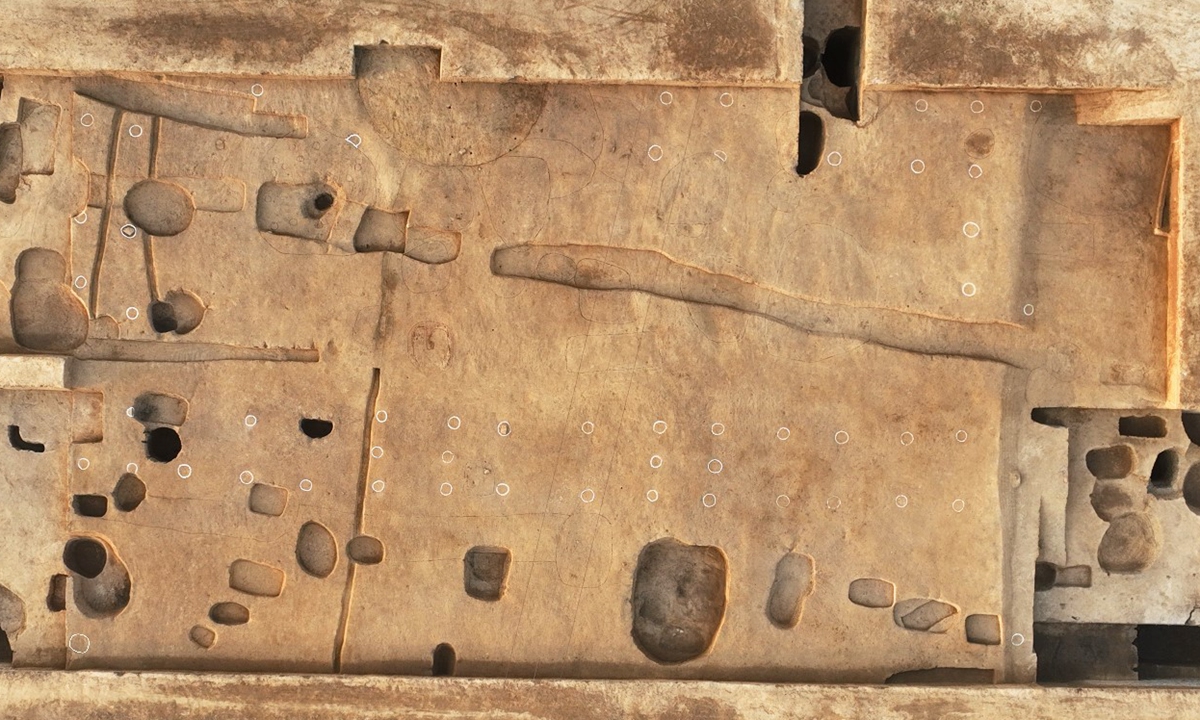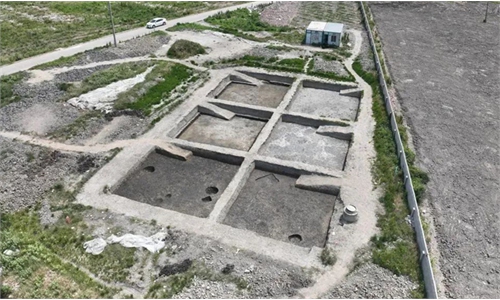ARTS / CULTURE & LEISURE
Archaeologists announce earliest fire-drilling tools found in China and major prehistoric findings
China's National Cultural Heritage Administration (NCHA) on Friday revealed major advancements at three archaeological sites, showcasing significant discoveries of history and culture from prehistoric period and the Xia Dynasty (c.2070BC-c.1600BC).

The Huangchaodun site is located in Quzhou, East China's Zhejiang Province. It is a settlement from the early to mid-Neolithic period, dating back approximately 9,300 to 8,000 years.
The site, covering an area of about 70,000 square meters, includes two platforms, a surrounding moat, and a rice paddy. Ancient river channels, ponds, and water ditches connecting the ponds to the settlement moat were also discovered.
The rice paddy, located east of the platforms and covering about 15,000 square meters, has revealed ridges and possible wooden remains, with the discovery of carbon-tempered pottery shards. Optically stimulated luminescence dating indicates that the rice paddy dates back to the Shangshan culture - recognized as the world's earliest rice cultivation culture, dating between 11,400 and 8,600 years ago - and extends into the early Neolithic Kuahuqiao culture period.
Lin Liugen, a professor from the School of Art and Archaeology of Zhejiang University, told the Global Times on Friday that the site is characterized by its "distinctive features and unique elements." It is one of the most well-preserved Shangshan-Kuahuqiao culture sites, offering a vivid snapshot of early rice farming communities within the lower Yangtze River region.
"Understanding the relationship between such a large-scale rice paddy field and the settlement is of great significance for studying the early agricultural development in ancient China 9,000 years ago and for recognizing the dietary structure of our ancestors at that time," he said.

The second project, the Caoyangang site in Xinghua, East China's Jiangsu Province, is a mid-Neolithic site, dating back about 7,200 to 6,900 years.
Covering more than 80,000 square meters, the site is covered by a natural sediment measuring nearly 2 meters thick. The unique low-lying wetland environment with waterlogged preservation has allowed for the excellent conservation of a large number of organic artifacts.
Over 200 features, including house sites, ash pits, ash ditches, and wells, have been discovered. In addition, more than 2,800 artifacts made of various materials, including pottery, bone, stone, wood, jade, and shells, have been unearthed. It is worthy to mention that the unearthed fire-drilling tools are the earliest known in China.
Gan Huiyuan, a research fellow at Jiangsu Provincial Institute of Cultural Relics and Archaeology, told the Global Times that the Caoyangang site is the earliest known Neolithic site in the eastern Jianghuai region, with a novel cultural aspect, rich connotations, and distinct regional characteristics, filling a gap in the Neolithic archaeology of the Jianghuai area, a region near the Yangtze River and Huaihe River.

The third unveiled Baliqiao site is located in Fangcheng county, Central China's Henan Province. It is a large enclosed settlement of the renowned Erlitou culture, which has been dated between 1700-1600BC.
The site, spanning approximately 1.35 million square meters, is bordered by moats on its north, west, and south sides, with a local river forming its eastern boundary. On the east bank of the Pan River, large-scale cultural remains from the same period have been uncovered. Sacrificial pits have been found around the main building of Site 1, with the discovery of ritual vessels, jade, and turquoise artifacts.
Wu Zhijiang, deputy research fellow of the Henan Provincial Institute of Cultural Heritage and Archaeology, told the Global Times that the Baliqiao site is the largest and highest-ranked Erlitou culture settlement discovered in southern Henan Province to date, and bears a close relation with the Erlitou Relics that can be traced back to 3,500 to 3,800 years ago in ancient China's late Xia or early Shang (1600-1046 BC) dynasties.
He noted that the preliminary revelations of the "multi-grid layout" and the discovery of significant remains such as large rammed earth buildings offer new insights into the morphology and social structure of urban settlements in Xia culture. These discoveries mark a significant breakthrough in the archaeology of Xia culture.

The rice paddy area of the Huangchaodun site in Quzhou, East China's Zhejiang Province. Photo: Courtesy of National Cultural Heritage Administration
The Huangchaodun site is located in Quzhou, East China's Zhejiang Province. It is a settlement from the early to mid-Neolithic period, dating back approximately 9,300 to 8,000 years.
The site, covering an area of about 70,000 square meters, includes two platforms, a surrounding moat, and a rice paddy. Ancient river channels, ponds, and water ditches connecting the ponds to the settlement moat were also discovered.
The rice paddy, located east of the platforms and covering about 15,000 square meters, has revealed ridges and possible wooden remains, with the discovery of carbon-tempered pottery shards. Optically stimulated luminescence dating indicates that the rice paddy dates back to the Shangshan culture - recognized as the world's earliest rice cultivation culture, dating between 11,400 and 8,600 years ago - and extends into the early Neolithic Kuahuqiao culture period.
Lin Liugen, a professor from the School of Art and Archaeology of Zhejiang University, told the Global Times on Friday that the site is characterized by its "distinctive features and unique elements." It is one of the most well-preserved Shangshan-Kuahuqiao culture sites, offering a vivid snapshot of early rice farming communities within the lower Yangtze River region.
"Understanding the relationship between such a large-scale rice paddy field and the settlement is of great significance for studying the early agricultural development in ancient China 9,000 years ago and for recognizing the dietary structure of our ancestors at that time," he said.

A bird view of Caoyangang site in Xinghua, East China's Jiangsu Province. Photo: Courtesy of National Cultural Heritage Administration
The second project, the Caoyangang site in Xinghua, East China's Jiangsu Province, is a mid-Neolithic site, dating back about 7,200 to 6,900 years.
Covering more than 80,000 square meters, the site is covered by a natural sediment measuring nearly 2 meters thick. The unique low-lying wetland environment with waterlogged preservation has allowed for the excellent conservation of a large number of organic artifacts.
Over 200 features, including house sites, ash pits, ash ditches, and wells, have been discovered. In addition, more than 2,800 artifacts made of various materials, including pottery, bone, stone, wood, jade, and shells, have been unearthed. It is worthy to mention that the unearthed fire-drilling tools are the earliest known in China.
Gan Huiyuan, a research fellow at Jiangsu Provincial Institute of Cultural Relics and Archaeology, told the Global Times that the Caoyangang site is the earliest known Neolithic site in the eastern Jianghuai region, with a novel cultural aspect, rich connotations, and distinct regional characteristics, filling a gap in the Neolithic archaeology of the Jianghuai area, a region near the Yangtze River and Huaihe River.

Site 1 of the Baliqiao site in Fangcheng county, Central China's Henan Province. Photo: Courtesy of National Cultural Heritage Administration
The third unveiled Baliqiao site is located in Fangcheng county, Central China's Henan Province. It is a large enclosed settlement of the renowned Erlitou culture, which has been dated between 1700-1600BC.
The site, spanning approximately 1.35 million square meters, is bordered by moats on its north, west, and south sides, with a local river forming its eastern boundary. On the east bank of the Pan River, large-scale cultural remains from the same period have been uncovered. Sacrificial pits have been found around the main building of Site 1, with the discovery of ritual vessels, jade, and turquoise artifacts.
Wu Zhijiang, deputy research fellow of the Henan Provincial Institute of Cultural Heritage and Archaeology, told the Global Times that the Baliqiao site is the largest and highest-ranked Erlitou culture settlement discovered in southern Henan Province to date, and bears a close relation with the Erlitou Relics that can be traced back to 3,500 to 3,800 years ago in ancient China's late Xia or early Shang (1600-1046 BC) dynasties.
He noted that the preliminary revelations of the "multi-grid layout" and the discovery of significant remains such as large rammed earth buildings offer new insights into the morphology and social structure of urban settlements in Xia culture. These discoveries mark a significant breakthrough in the archaeology of Xia culture.



